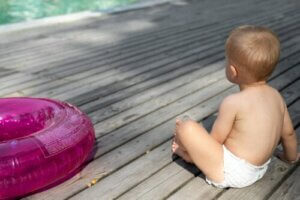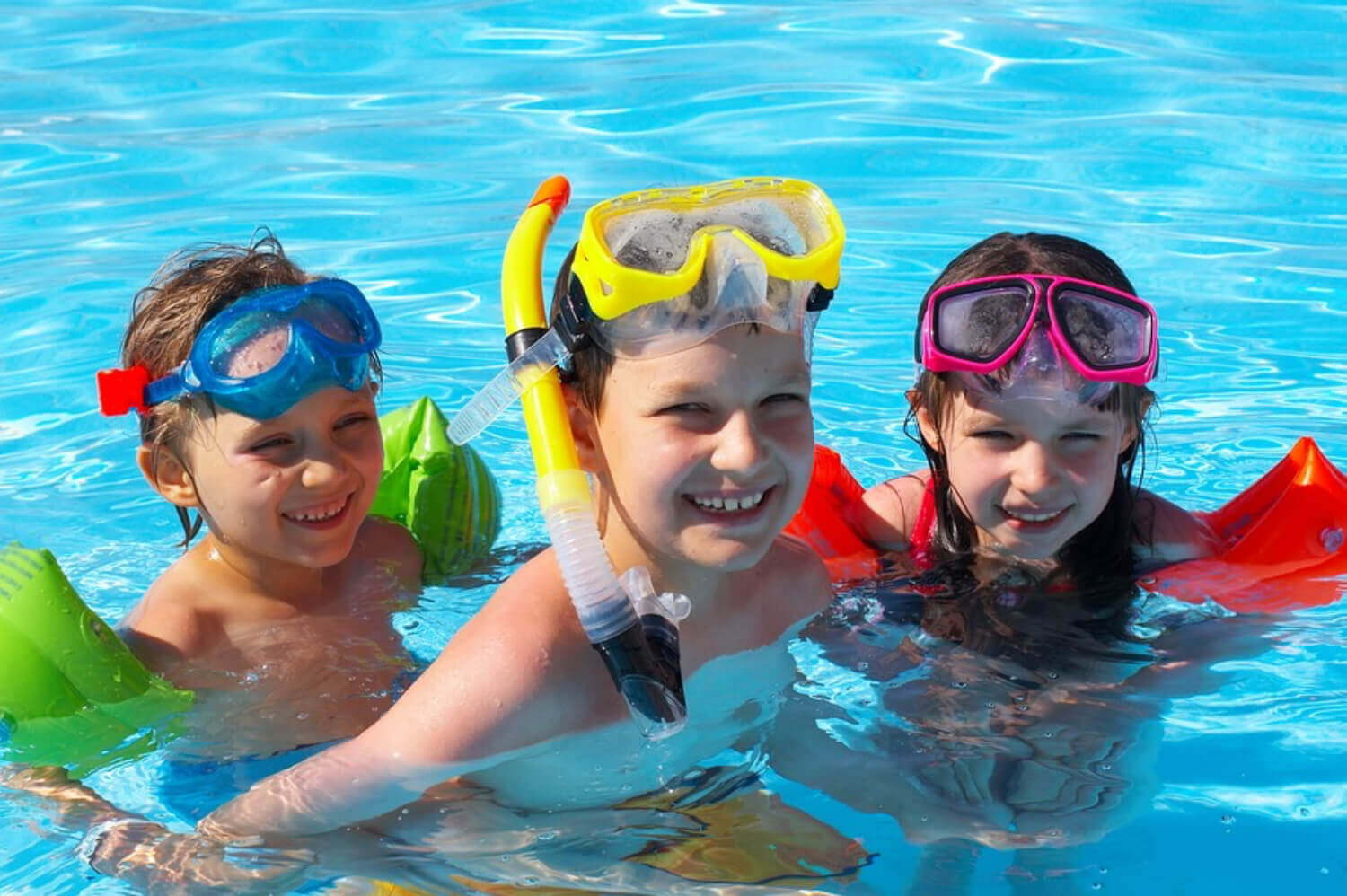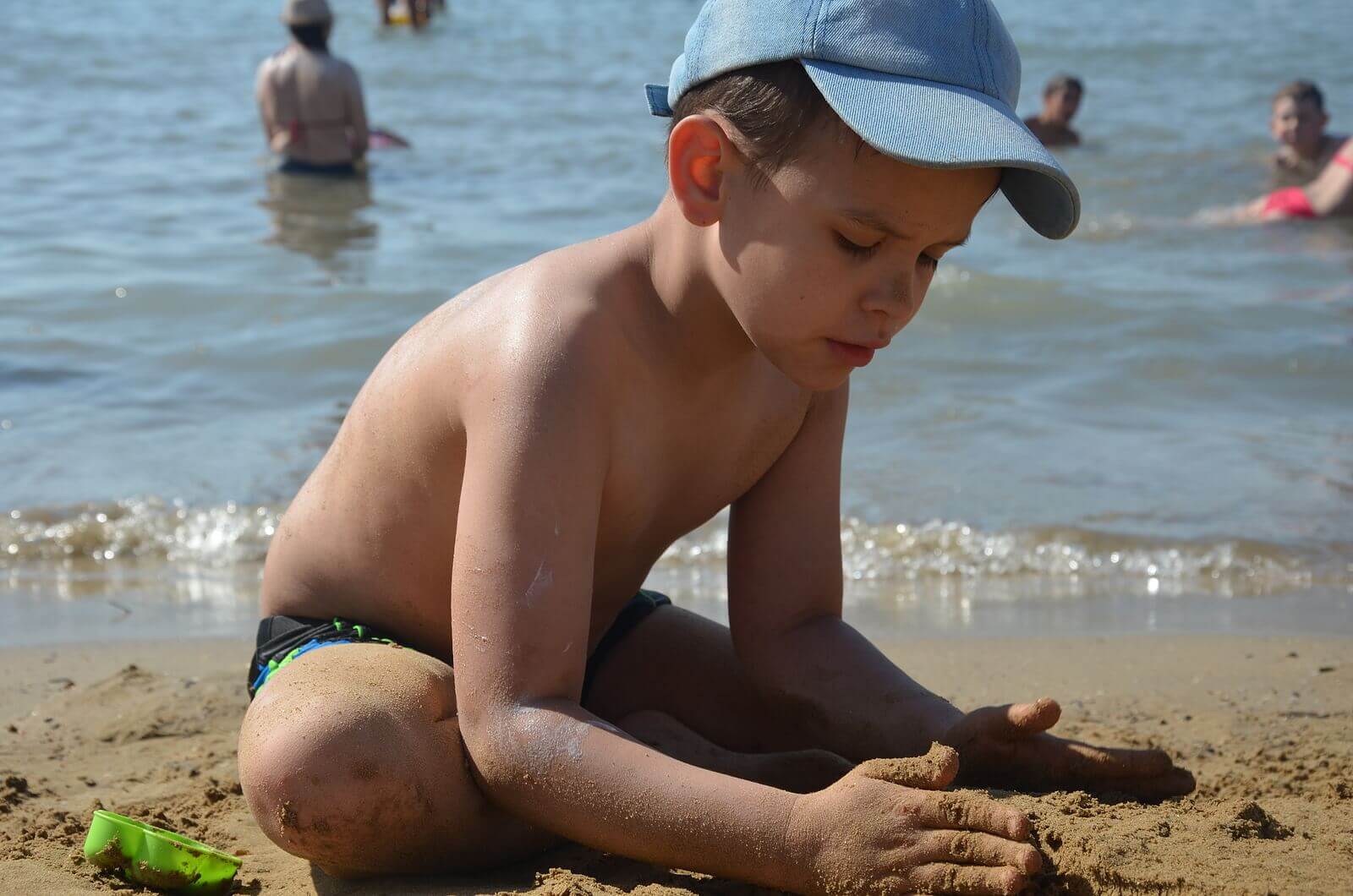How to Respond to Drowning in Children

The beginning of the summer season means that the fear of drowning is present in almost every parent. Children spend a great deal of time in and around the water during the hot summer months. But, even though they’re with supervision, it takes just a split second for an accident to take place. In fact, in developed countries, estimates reveal that drowning is the second leading cause of death. Clearly, knowing how to respond to drowning is paramount.
In these cases, it’s important to remain as calm as possible and act quickly and efficiently. In this sense, having a clear idea of what steps to take can help you respond to drowning in the most mechanical way possible, without panicking. That’s why, in the article below, we want to tell you how to respond to drowning in children.
What is drowning?
The definition of drowning is the total incapacity to breathe. In other words, when a person is drowning, they can’t introduce air into their lungs.
While this can take place for a number of reasons, today, we’ll focus specifically on drowning in water. In this particular case, liquid occupies the airways without leaving room for air to get in. When this occurs, the entire body stops receiving oxygen and, as a result, individuals quickly lose consciousness.

You may also want to read: Taking Children to the Pool: Necessary Precautions
When does drowning in children take place?
In most cases, children don’t need to spend a lot of time unsupervised for these situations to take place. It takes just a few seconds for children to lose stability in the water or to slip and fall inside. In fact, even supervised children can fall victim to these accidents.
What’s more, drowning doesn’t take place exclusively in deep pools and bodies of water. Experts claim that just 12 inches of water are sufficient to cause drowning.
That’s why the most important step in the prevention of drowning is to never leave children unsupervised in or around water. What’s more, you should always stay close by, even if they’re within eyesight. That way, if you notice anything alarming, you’ll be able to respond to drowning as quickly as possible.
How to respond to drowning in children?
Once again, the most important factor in responding to drowning is to do so quickly. Therefore, as soon as you notice something’s awry, you need to look to see what’s happening. Most of the time, children don’t make any noise to attract your attention. Rather, they try to ask for help through movements like trying to lift their arms and heads above water. Without success, they end up exhausted.
Step 1
If you notice a child drowning, the first thing you should do is call for help in order to take the child out of the water without putting yourself at risk. If you’re at a pool or beach with supervision, then call for a lifeguard who will know the correct protocol in order to respond.
Step 2
Once you’ve taken the child out of the water, place them in a safe spot. At this point, you should check if the child’s conscious by seeing if they respond to stimuli. For example, call their name, pat them, and even shake them gently to see if they react.
In any case, you should notify emergency services so that they can come and conduct a more detailed evaluation of the situation. In that sense, one of two scenarios may occur:
- Scenario 1: The child responds to stimuli, which means they’re conscious. If that’s the case, place the child in a safe lateral position. This is, in part, to prevent the child from swallowing in case they vomit. Also, you should remove wet clothing and cover the child with dry towels or blankets if there’s any risk of hypothermia.
- Scenario 2: The child doesn’t respond to stimuli, meaning they’re completely or nearly unconscious. If the child is unconscious, then you should check if they’re breathing or not by putting your face near their nose. At the same time, observe the thorax to see if you notice any signs of breathing. If the child is breathing, then respond the same way you would if they were conscious. In other words, place them in a secure lateral position and make sure they stay safe until emergency services arrive.
You should also read: CPR in Babies and Infants: What You Should Know

Step 3
If the child is unconscious and isn’t breathing, the next step is to perform CPR (cardiopulmonary resuscitation). To perform this maneuver correctly, you should follow the step below:
- Place the child face-up on a hard, safe surface.
- Open the child’s airways. To do so, place your hand on their forehead and tilt their head back. This makes it possible for air to enter the lungs.
- Do 5 breaths. In other words, introduce air into the child’s lungs by covering their mouth and nose with your mouth and blowing in deeply 5 times.
- Perform thorax compressions for one minute. You should place your hands in the center of the thorax, halfway between the two nipples. The compressions should be strong enough to cause the heart to pump blood manually.
- Once you’ve performed the 5 breaths and one minute of compressions, call for help from emergency services if you’re alone. If there are more people around, they should have already called 911 by this point.
- Keep alternating between 2 breaths and 30 chest compressions until emergency services have arrived or until the child begins breathing on their own.
What else do you need to know about how to respond to drowning?
Drowning is a very dangerous scenario that takes place frequently during the summer. Therefore, you must always stay close to your children when they’re in or around water and watch them at all times. In the case of an accident, respond as calmly and quickly as possible, ask for help, notify emergency services, and follow the steps above.
The beginning of the summer season means that the fear of drowning is present in almost every parent. Children spend a great deal of time in and around the water during the hot summer months. But, even though they’re with supervision, it takes just a split second for an accident to take place. In fact, in developed countries, estimates reveal that drowning is the second leading cause of death. Clearly, knowing how to respond to drowning is paramount.
In these cases, it’s important to remain as calm as possible and act quickly and efficiently. In this sense, having a clear idea of what steps to take can help you respond to drowning in the most mechanical way possible, without panicking. That’s why, in the article below, we want to tell you how to respond to drowning in children.
What is drowning?
The definition of drowning is the total incapacity to breathe. In other words, when a person is drowning, they can’t introduce air into their lungs.
While this can take place for a number of reasons, today, we’ll focus specifically on drowning in water. In this particular case, liquid occupies the airways without leaving room for air to get in. When this occurs, the entire body stops receiving oxygen and, as a result, individuals quickly lose consciousness.

You may also want to read: Taking Children to the Pool: Necessary Precautions
When does drowning in children take place?
In most cases, children don’t need to spend a lot of time unsupervised for these situations to take place. It takes just a few seconds for children to lose stability in the water or to slip and fall inside. In fact, even supervised children can fall victim to these accidents.
What’s more, drowning doesn’t take place exclusively in deep pools and bodies of water. Experts claim that just 12 inches of water are sufficient to cause drowning.
That’s why the most important step in the prevention of drowning is to never leave children unsupervised in or around water. What’s more, you should always stay close by, even if they’re within eyesight. That way, if you notice anything alarming, you’ll be able to respond to drowning as quickly as possible.
How to respond to drowning in children?
Once again, the most important factor in responding to drowning is to do so quickly. Therefore, as soon as you notice something’s awry, you need to look to see what’s happening. Most of the time, children don’t make any noise to attract your attention. Rather, they try to ask for help through movements like trying to lift their arms and heads above water. Without success, they end up exhausted.
Step 1
If you notice a child drowning, the first thing you should do is call for help in order to take the child out of the water without putting yourself at risk. If you’re at a pool or beach with supervision, then call for a lifeguard who will know the correct protocol in order to respond.
Step 2
Once you’ve taken the child out of the water, place them in a safe spot. At this point, you should check if the child’s conscious by seeing if they respond to stimuli. For example, call their name, pat them, and even shake them gently to see if they react.
In any case, you should notify emergency services so that they can come and conduct a more detailed evaluation of the situation. In that sense, one of two scenarios may occur:
- Scenario 1: The child responds to stimuli, which means they’re conscious. If that’s the case, place the child in a safe lateral position. This is, in part, to prevent the child from swallowing in case they vomit. Also, you should remove wet clothing and cover the child with dry towels or blankets if there’s any risk of hypothermia.
- Scenario 2: The child doesn’t respond to stimuli, meaning they’re completely or nearly unconscious. If the child is unconscious, then you should check if they’re breathing or not by putting your face near their nose. At the same time, observe the thorax to see if you notice any signs of breathing. If the child is breathing, then respond the same way you would if they were conscious. In other words, place them in a secure lateral position and make sure they stay safe until emergency services arrive.
You should also read: CPR in Babies and Infants: What You Should Know

Step 3
If the child is unconscious and isn’t breathing, the next step is to perform CPR (cardiopulmonary resuscitation). To perform this maneuver correctly, you should follow the step below:
- Place the child face-up on a hard, safe surface.
- Open the child’s airways. To do so, place your hand on their forehead and tilt their head back. This makes it possible for air to enter the lungs.
- Do 5 breaths. In other words, introduce air into the child’s lungs by covering their mouth and nose with your mouth and blowing in deeply 5 times.
- Perform thorax compressions for one minute. You should place your hands in the center of the thorax, halfway between the two nipples. The compressions should be strong enough to cause the heart to pump blood manually.
- Once you’ve performed the 5 breaths and one minute of compressions, call for help from emergency services if you’re alone. If there are more people around, they should have already called 911 by this point.
- Keep alternating between 2 breaths and 30 chest compressions until emergency services have arrived or until the child begins breathing on their own.
What else do you need to know about how to respond to drowning?
Drowning is a very dangerous scenario that takes place frequently during the summer. Therefore, you must always stay close to your children when they’re in or around water and watch them at all times. In the case of an accident, respond as calmly and quickly as possible, ask for help, notify emergency services, and follow the steps above.
All cited sources were thoroughly reviewed by our team to ensure their quality, reliability, currency, and validity. The bibliography of this article was considered reliable and of academic or scientific accuracy.
- Blasco Alonso, J., Moreno Pérez, D., Milano Manso, G., Calvo Macías, C., & Jurado Ortiz, A. (2005). Ahogamientos y casi ahogamientos en niños. Anales de Pediatría, 62(1), 20–24. https://medes.com/publication/15731
- Rodríguez-Núñez, A., & Van De Voorde, P. (n.d.). Actualización de las recomendaciones internacionales de reanimación cardiopulmonar pediátrica (RCP): recomendaciones europeas de RCP pediátrica. Retrieved July 9, 2020, from https://www.researchgate.net/publication/319653211
- Carrillo Álvarez, A., & López-Herce Cid, J. (2006). Conceptos y prevención de la parada cardiorrespiratoria en niños. In Anales de Pediatria (Vol. 65, Issue 2, pp. 140–146). Elsevier Doyma. https://doi.org/10.1016/s1695-4033(06)70166-7
This text is provided for informational purposes only and does not replace consultation with a professional. If in doubt, consult your specialist.








